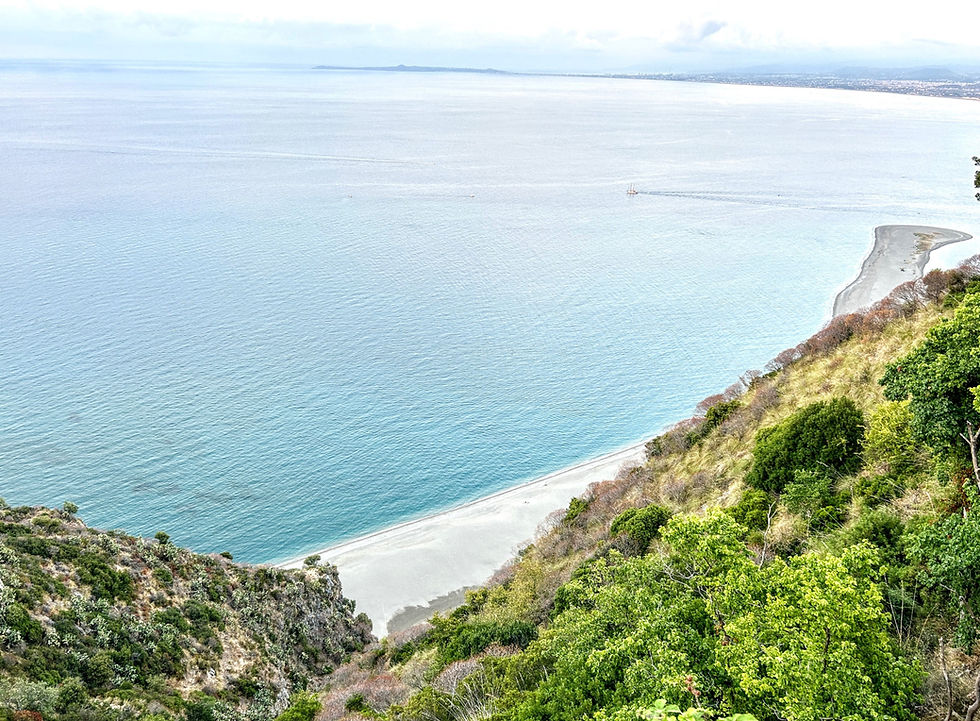The beautiful, cultured, elegant city of saints, bankers, and kings. Three times the capital of 3 empires. Today Ravenna, between Paleochristian and Byzantine mosaics, preserves as many as eight monuments included in the #UNESCO World Heritage List... #tuttitaly
Ravenna, the city of mosaics and of Dante Alighieri, was the capital of three empires three times: the Western Roman, the Ostrogoths, and the Eastern Roman Empire.
The majesty and importance that the city enjoyed in past eras can be perceived by visiting the 8 Unesco heritage monuments:
Basilica of San Vitale - conceived to bear witness to the Byzantine imperial greatness and the reign of Justinian. In particular, the building stands out for the refinement and preciousness of its decorations and the materials used.
Finding yourself inside, it will be difficult for you to embrace the space with your gaze. The light that filters through the windows creates suggestive effects with the mosaic decorations and the marble and stone surfaces.
Mausoleum of Galla Placidia - inside, you are captured, thanks to the mosaic decorations and the golden light that filters through the alabaster windows, giving you a truly magical atmosphere. The lower part is covered with yellow marble, while in the upper area, the mosaics entirely cover walls, arches, lunettes, and a dome.
The building was to serve as the "final resting place" of the empress Galla Placidia, who wanted to be buried here together with her brother and husband, Constantius III. However, it was never used in this sense: in 450 AD., the empress died in Rome and was buried there.
Arian Baptistery - It is set between the buildings and houses of the historic center. Inside, nothing is left of the stuccoes and ornaments that cover the walls. The only preserved part is the dome covered with mosaics depicting the baptism of Christ, which are almost certainly from the Theodoric age.
Neoniano (or Orthodox) Baptistery - one of the most ancient monuments of Ravenna, whose visit Carl Gustav Jung described as a beautiful "hallucination" thanks to the magic of its interior decorations, which appear extraordinarily rich and bright. The mosaic dome presents in its outer band natural motifs such as plants and flowers, empty thrones, and altars; in the middle band, the figures of the 12 apostles emerge on a blue background; in the center of the dome, a large medallion contains the scene of Christ immersed in the waters of the Jordan River in the company of St. John the Baptist.
In the center of the building is an octagonal basin of Greek marble and porphyry.
Chapel of St. Andrew - the whole decorative program of the chapel is a hymn to the Savior. The concept of glorification as the ultimate affirmation of Catholic orthodoxy is underlined by the presence of Christ in the guise of a warrior and by the images of martyrs, apostles, and evangelists. Also, the Latin inscription in the vestibule, "Aut lux hic nata est aut capta hic libera regnat," is probably a reference to the Orthodox light instead of Arianism.
Basilica of S. Apollinare Nuovo - while on the outside the basilica appears very simple, inside one finds one of the most famous early Christian and late antique mosaic cycles in the world. The 26 Christological scenes represent the most significant monumental cycle of the New Testament and, among those made in mosaics, the oldest that has survived.
Mausoleum of Theodoric - the monument, entirely made of dry-laid blocks of Aurisina stone, mixes the Roman construction tradition with some oriental influences. It was built by the will of Theodoric as his burial around 520 AD. Still, during the Byzantine rule, his remains were removed and dispersed, and the mausoleum was transformed into an oratory and consecrated to the Orthodox cult.
Basilica of S. Apollinare in Classe - born to house the remains of Apollinare, patron saint of the city, the basilica was built on a previous cemetery area. The structure is admired for the splendid polychrome mosaics of its apse basin and the ancient marble sarcophagi of the archbishops located along the side aisles.
























Comments